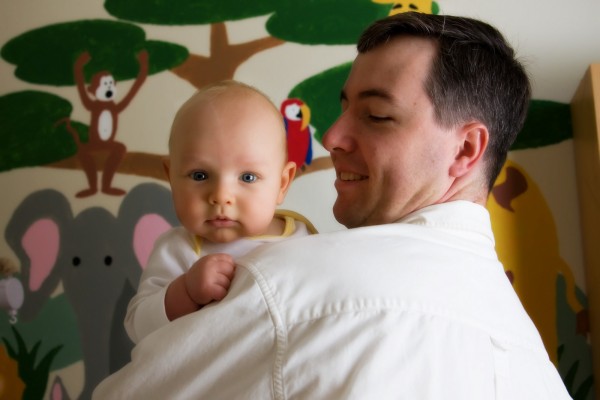Motherly Love… solved.
October 9th, 2008. (4 months, 1 week old.) by benOK… so not quite. But I do think I’ve worked out part of the formula to calculate how time and distance work into the equation. What I’ve noticed is that when Mommy goes away, her motherly urge to return (and bask in my presence) depends on the time and distance.
As long as she is close enough, the time doesn’t matter. But once she’s far enough away, then the time factor kicks in exponentially. Distance matters less in contributing to the urge once the distance threshold has been crossed.
So we have a discontinuous function U (urge to return) of distance d and time t, U(d,t).
For d < D, U(d,t) = 0
for d >= D, U(d,t) = t1.2/T’ * (d-D)/D’
where D is approximately 100 meters, and D’ and T’ are a scaling factors.
If any of my math buddies out there (you know who you are) can help me express this relationship better, please do let me know.
One other interesting tidbit: Mommy discovered recently that the distance d really is a spacial distance, and not a distance as one would often express in while traveling by car in L.A., i.e. in units of time. In other words, it matters not how long it would take her to return, just how far away she is. Being 10 minutes away by car can seem further away than 20 minutes on foot! How strange!
And, just to make this post more interesting, here’s a picture of me & Daddy from our recent professional photo shoot.
(Photo credit: Jeneanne Ericsson)

Jen,
I love this! Finally putting some of that math to work. Keep it up.
Dad
Jen, did you gather data and do a curve fit to get this function or is this derived theoretically. Also a graph would be nice or at least an analysis of its behavior—where is the function increasing what are it’s local max and min. What is it’s asymptotic behavior?